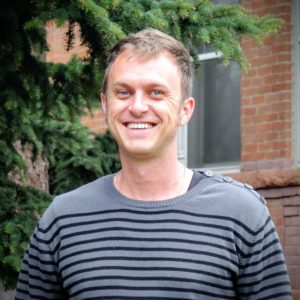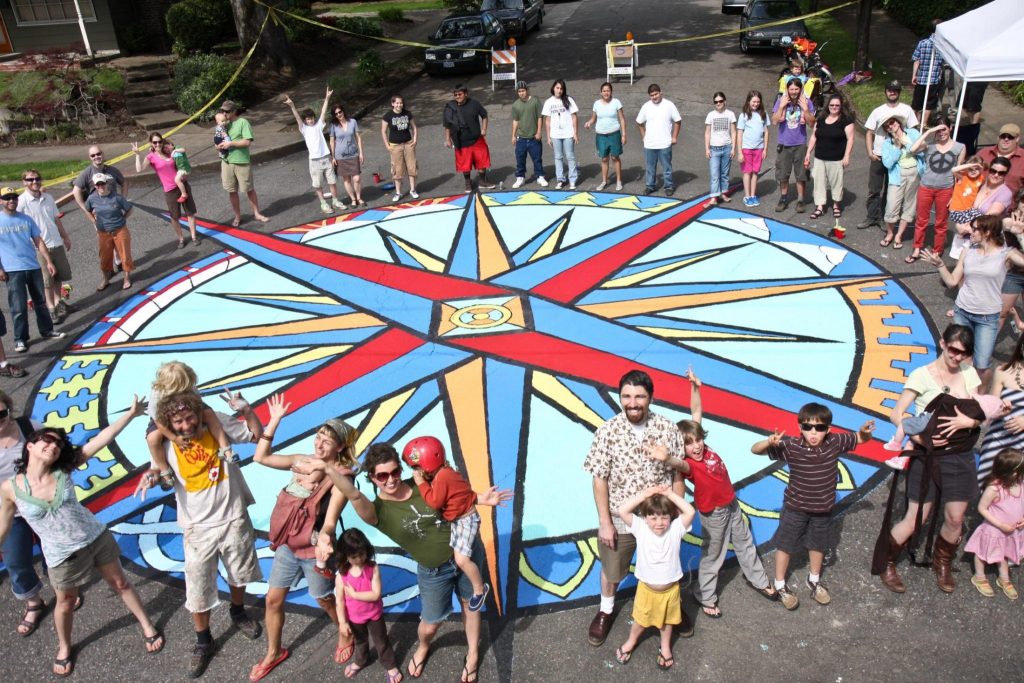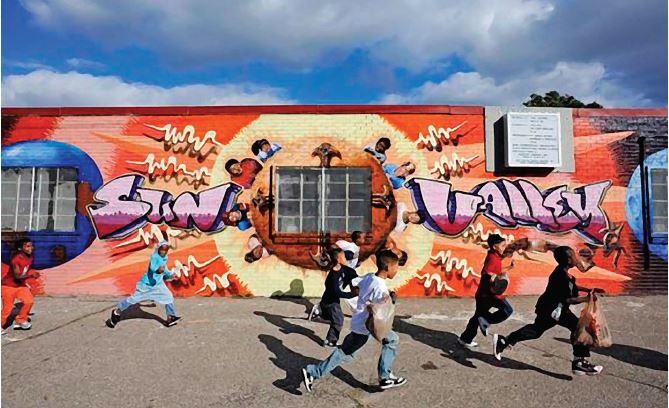 Population growth in Colorado is difficult to ignore, and isn’t expected to slow any time soon. According to the Colorado State Demographers, the population on Colorado’s Front Range could double by the year 2050. How can communities retain their character in the face of such change?
Population growth in Colorado is difficult to ignore, and isn’t expected to slow any time soon. According to the Colorado State Demographers, the population on Colorado’s Front Range could double by the year 2050. How can communities retain their character in the face of such change?
The problems, and the solutions, associated with growth are complex. With such a rapid influx of emigrants into large and medium sized cities, cultural fabrics are in a constant state of flux. Economies, employment opportunities, development approaches, and architectural styles are less tied to place than before. As a result, places are losing their distinct identities. The need for adaptive, community-driven solutions has become more important now than ever. To inform these solutions, practitioners and funders are increasingly looking to placemaking and tactical urbanism. Let’s take a closer look at these two approaches.
It’s a question of resources…
Challenges around growth on the Colorado Front Range are broad, from increasing property values that price many out of the towns they grew up in or serve, to how water resources will be managed effectively in an arid state with obscure water laws dating back to the Civil War era. How will Colorado’s influx of people be fed? What cultures will they bring and how will this change our collective identity? How can we retain the cultural populations that already call Colorado home? Can anything be done to allay gentrification in a supply-and-demand housing market? These questions hold weight for any place experiencing growth, not just the Front Range.
Growth, development, and redevelopment don’t always bring with them a unique sense of identity. In recent years, how many old neighborhoods and new communities have become more like somewhere else and less like they once were? There is widespread homogenization of American communities. Many Coloradans on the Front Range struggle to keep their local and independent businesses open with increased competition from chains, to keep land in their families as property taxes increase, and to keep ahead when wages are not growing at the same rate as the cost of living. These problems are difficult to solve, and would require a crack team of economists, social scientists, policy wonks, and urban designers.
The toolbox available for local and regional communities to deal with these issues remains fairly empty. While properly structured subsidies and incentives (often at the federal level) can be helpful, there is nevertheless a growing need for neighborhoods to be activated at more grassroots levels. Two solutions that many are exploring are placemaking and tactical urbanism.
Placemaking: What makes a place a place?
In recent years, placemaking has become a buzzword to mean a new and novel approach to community infill and redevelopment. The National Endowment for the Arts (NEA) coined the term “creative Placemaking” as recently as 2010, although the concept has been around for much longer. The Project for Public Spaces in New York City, founded in 1975 to study and implement best practices for community resilience through public spaces, defines placemaking as “a collaborative process by which we can shape our public realm in order to maximize shared value. More than just promoting better urban design, Placemaking facilitates creative patterns of use, paying particular attention to the physical, cultural, and social identities that define a place and support its ongoing evolution.”
Sounds brilliant, but it’s not all that easy to accomplish in practice. In fact, it’s a bit difficult to know where to focus first. Should you approach placemaking at the regional or neighborhood level? Is it about a building, a plaza, a street, something else? Or, is its focus more socio-cultural, considering the identity of a particular demographic, even if that demographic is or may be changing? No matter what the approach, placemaking requires identifying and cultivating the unique traits inherent to an individual place, and doing so with full community input and participation. It requires a broad team of stakeholders who prioritize community health in order to inform decisions that reflect and honor the character, culture, and mindset of that place. However, some believe that placemaking, as it is currently practiced, may be falling short.
From the ground up or from the top down?
The investment in placemaking by federal agencies like the NEA and other private foundations has received deep critique in recent years, and with good reason. Placemaking has been practiced by communities for decades in an effort to bootstrap local economy, cultural identity, and quality of life. It used to be thought of through a more localized lens ─ as with the City Repair Project founded in Portland, which integrates public art into residential intersections to slow traffic. But placemaking has taken on a vernacular definition in recent years that connotes larger capital and design projects, like the wildly successful revitalization of the Cheonggyecheon River Walk in Seoul, South Korea.
Despite so much recent interest in placemaking (and its street cred and cultural cachet), there is a backlash by veteran practitioners and artists working in the public realm who see it becoming a cause of, not a solution to, gentrification. It’s all too common to participate in community input forums and hear from residents most at risk of displacement who fear that improving public space conditions and amenities (for example, with safer sidewalks or better street trees) will only exacerbate neighborhood turnover. It’s tough to ignore these very real concerns in places like the Front Range, where speculative investors will pay full market value and above, with cash in hand, for properties.
Tactical urbanism: Short-term strategies for long-term change
One cautiously optimistic solution is to make things a just bit nicer, and to always do so in ways that will increase the social, natural, and ecological capital already in the community. Is it possible to make things nicer, but not too nice? Tactical urbanism is something of a little brother to creative placemaking, or at least represents an intent that harkens back to the genesis of placemaking. It focuses on short-term, temporary, or pilot programs or interventions intended to spur a long-term change. The idea formally emerged in the early 21st century in a meeting of the Next Generation of New Urbanists, and is referred to by the Project for Public Spaces as “Lighter, Quicker, Cheaper.” Where placemaking as it is currently practiced can sometimes act as a makeover, tactical urbanism intends a more organic, community-driven, https://ibe.colostate.edu/services/regenerative-development/regenerative outcome. While tactical urbanism is not necessarily intended to replace placemaking, it does perhaps reflect the original intent of the placemaking approach before it became conflated with the young, hip, and well-to-do.
Tactical urbanism in practice: Denver’s Sun Valley
Denver’s Sun Valley neighborhood is undergoing a massive redevelopment. Both the poorest and most diverse zip code in Colorado, its population is overwhelmingly young and 30% are below the area’s median income. Immigrants from Southeast Asia, East and West Africa, the Middle East, and Central and South America, as well as non-immigrant families, comprise the community, speaking 33 languages. Though in the metro Denver core, Sun Valley is spatially isolated—bounded by the Platte River and I-25 to the East, Mile High Stadium to the north, Federal Boulevard to the west, and a light industrial strip to the south. It has aging industrial and utility infrastructure and a dated public housing site that is home to 1,400 residents. The pressures of increased property values and cost of living pose a real challenge for Sun Valley’s residents, many of whom are at the highest risk of displacement.
Through the CityCraft Foundation, IBE is working with other Front Range universities (University of Denver, Regis University, Metropolitan State University, and University of Colorado- Denver) to establish a set of regenerative approaches and indicators in the Sun Valley neighborhood. This CityCraft Integrated Research Center (CIRC) has the goal of establishing regenerative indicators for the neighborhood that are fully driven by participatory community planning processes. Some long-term research will be more traditional, using hard science-based approaches to develop indicators for urban ecology, district energy programming, soil carbon accounting, and riparian restoration. In the short term, however, many of CIRC’s strategies will be grounded in the social sciences and liberal arts. The team will apply tactical urbanism to engage community members directly in the creation of regenerative indicators that matter to them.
Celebrating Place & People through Food & Art
The team’s first focus will be on food systems and public art. The team hopes to establish a collective will around the issue of food—overcoming language barriers and galvanizing shared experience across cultures—by expanding neighborhood garden beds, establishing a multi-ethnic heritage seed library, hosting gardening events, and conducting educational outreach. Through community storytelling grounded in the arts and targeted at youth, the team strives to create a shared understanding of the multi-faceted histories of the neighborhood by recording cultural stories and sharing them with the public. The CIRC team is hopeful that these approaches will build momentum around the community’s existing, inherent value that residents can leverage as their neighborhood goes through deep changes.
While these strategies may not be enough to stop the pressures that gentrification will continue to bring to the surrounding neighborhoods in Denver, perhaps they will provide an effective platform to bolster community trust and will, and to build capacity. These types of approaches may not be silver bullets, but they are healthy tactics to begin celebrating place, and the people who call it home.
Interested in learning more about the Sun Valley redevelopment? Check out IBE’s website and read our interview with Callahan Seltzer of CityCraft Foundation.



